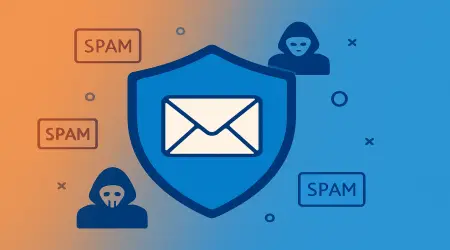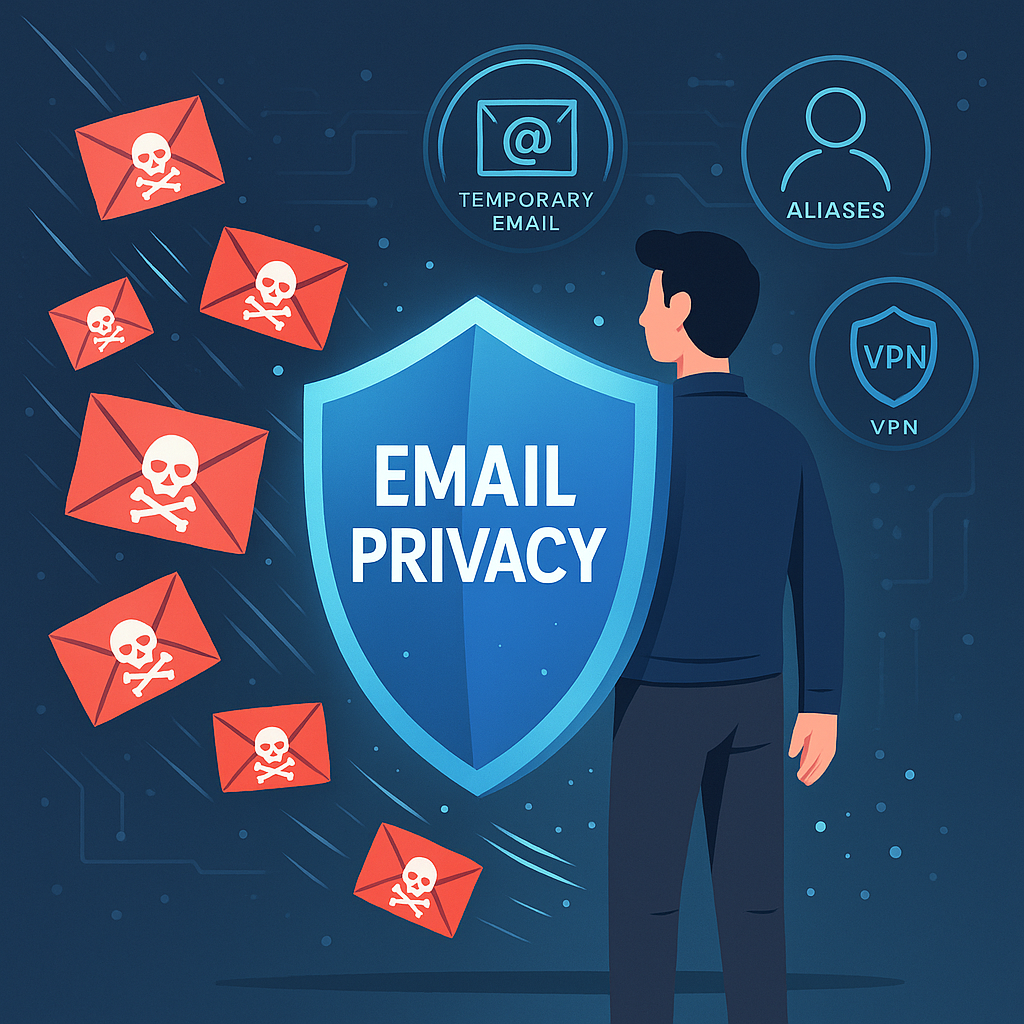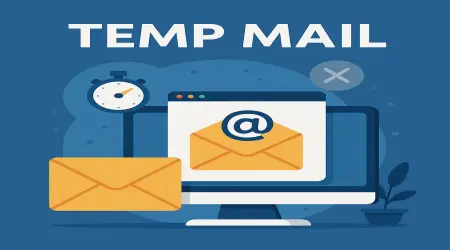

How to Hide Your Email and Avoid Spam (Ultimate Guide 2025 – Top 10 Proven Methods)
Introduction
Spam emails are more aggressive than ever in 2025, ranging from harmless promotions to dangerous phishing attacks. Sharing your real email address online can lead to inbox overload, privacy risks, and even identity theft. Fortunately, there are proven ways to hide your email and reduce spam without sacrificing convenience. This guide covers 10 effective methods to keep your inbox clean and your data safe.
1. Use Temporary Email Addresses
Temporary email services like Temporary‑Email.net generate disposable addresses you can use for sign‑ups, downloads, or testing. These addresses expire automatically, so spam never reaches your primary inbox.
Best for: One‑time registrations, anonymous browsing
2. Create Email Aliases
Email aliases forward messages to your real inbox but keep your main address hidden. Gmail and Outlook allow you to add “+keyword” to your address (e.g., [email protected]) to track and filter messages easily.
Best for: Managing multiple sign‑ups under one email
3. Use Spam Filters and Folders
Modern email providers (Gmail, Outlook, ProtonMail) have advanced spam filters. Customize them by marking unwanted messages and creating rules to redirect suspicious emails to a spam folder.
Best for: Reducing spam from known senders
4. Enable Two‑Factor Authentication (2FA)
While not directly hiding your email, 2FA protects your account from hackers who might target spam campaigns or phishing attacks.
Best for: Securing sensitive accounts
5. Avoid Sharing Email Publicly
Do not post your email on forums, social media, or comment sections. If necessary, obfuscate it (e.g., name [at] example [dot] com) to prevent bots from scraping it.
Best for: Personal and professional profiles
6. Use Encrypted Email Services
Privacy‑focused providers like ProtonMail or Tutanota encrypt your messages end‑to‑end, protecting them from interception and unwanted tracking.
Best for: Confidential communications
7. Unsubscribe from Unwanted Newsletters
Regularly unsubscribe from newsletters you no longer read. Use tools like Unroll.Me or built‑in Gmail unsubscribe buttons to clean up your inbox efficiently.
Best for: Reducing marketing spam
8. Report and Block Spammers
Most email services let you block senders and report spam. This not only removes future messages but also trains spam filters to catch similar ones.
Best for: Persistent spammers
9. Use Burner Email Apps
Mobile apps like SimpleLogin or AnonAddy create burner emails you can manage from your phone. You can deactivate any burner address once it receives spam.
Best for: Frequent online shoppers or testers
10. Separate Work and Personal Emails
Keep a dedicated email for work, personal use, and sign‑ups. This separation minimizes risk and makes managing spam easier across accounts.
Best for: Organization and security
Quick Comparison: Temporary vs Permanent Methods
| Method | Level of Privacy | Ease of Use | Best Use Case |
|---|---|---|---|
| Temporary Emails | High | Very easy | One‑time sign‑ups |
| Email Aliases | Medium | Easy | Tracking newsletters |
| Encrypted Email | High | Moderate | Secure communication |
| Spam Filters | Medium | Very easy | General inbox cleanup |
Conclusion
Hiding your email and avoiding spam in 2025 is easier than ever with the right tools and habits. Whether you use temporary emails for quick tasks or encrypted services for sensitive data, combining these strategies ensures maximum privacy and minimal spam. Start implementing these tips today to reclaim control over your inbox.
Target Keywords
hide your email 2025, avoid spam email, temporary email methods, email privacy tips, disposable email guide

